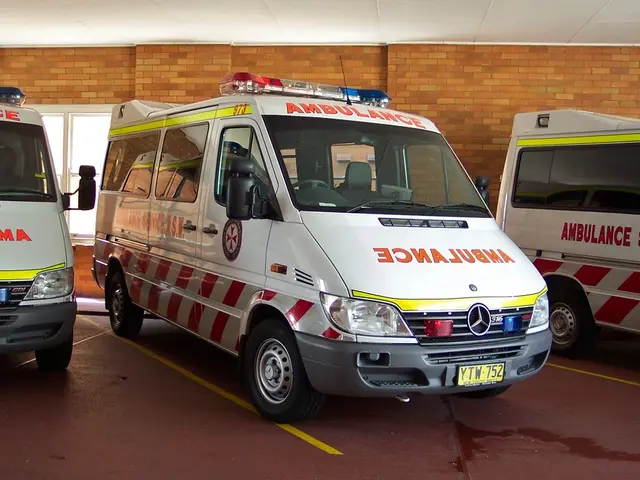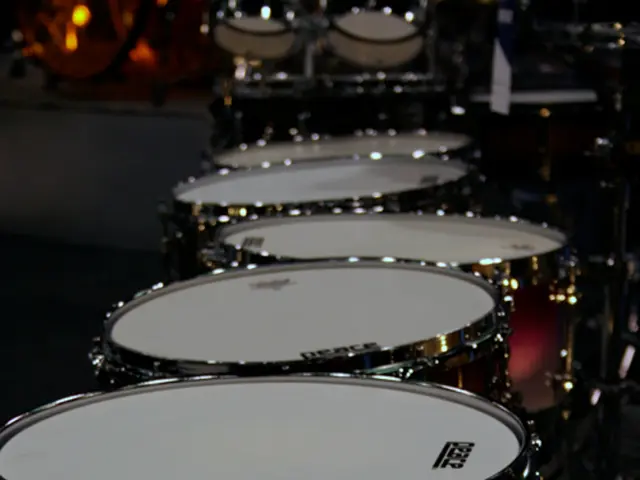Unrelated Shin Pain: Identifying Causes and Remedies (Excluding Shin Splints)
Shin pain can be a common and often frustrating issue for many individuals, especially athletes and active individuals. However, it's essential to understand that shin pain can be caused by more than just shin splints. In this article, we will explore some common causes of shin pain, their symptoms, treatments, and prevention methods.
1. **Stress Fractures** - Causes: Stress fractures are tiny cracks in the bone, often due to repetitive stress or overuse. They can occur in the tibia (shinbone) and are common in runners and jumpers. - Symptoms: Pain in the shin area that worsens with activity and improves with rest, swelling, and sometimes redness. - Treatment: Rest, ice, compression, and elevation (RICE principle), pain relievers, and possibly immobilization in a cast or boot. - Prevention: Gradual increase in activity, proper footwear, incorporating strength training for the lower legs.
2. **Compartment Syndrome** - Causes: Compartment syndrome occurs when pressure within the muscle compartments of the lower leg increases, usually due to intense exercise. - Symptoms: Severe pain, swelling, and tightness in the affected limb, weakness, and sometimes numbness. - Treatment: Immediate medical attention is crucial. Treatment may involve rest, ice, or surgery to relieve pressure. - Prevention: Ensuring proper warm-up and cool-down, staying hydrated, and gradually increasing exercise intensity.
3. **Muscle Strains** - Causes: Muscle strains occur when muscles are stretched too far, causing tears in the muscle fibers. This can happen in the muscles around the shin. - Symptoms: Pain, swelling, bruising, and limited mobility in the affected area. - Treatment: Rest, ice, compression, and elevation (RICE principle), pain relievers, and possibly physical therapy. - Prevention: Warm-up routines, stretching exercises, and gradually increasing exercise intensity.
4. **Tibial Stress Syndrome (Other than Shin Splints)** - Causes: Similar to shin splints but can involve other parts of the tibia, often due to biomechanical issues or overuse. - Symptoms: Pain along the tibia that worsens with activity. - Treatment: Rest, physical therapy to address biomechanical issues, proper footwear, and possibly orthotics. - Prevention: Gradual increase in activity, supportive footwear, and ensuring good running form.
5. **Periostitis (Inflammation of the Periosteum)** - Causes: Inflammation of the periosteum, the layer of tissue surrounding the bone, similar to shin splints but not limited to the medial aspect. - Symptoms: Pain and swelling along the bone. - Treatment: Rest, pain relievers, ice, and physical therapy. - Prevention: Similar to shin splints, including proper shoes and gradual activity increase.
Prevention methods for all these conditions include: - Gradual Progression: Increase exercise intensity and duration gradually. - Proper Footwear: Wear supportive shoes designed for your foot type. - Biomechanical Correction: Address muscle imbalances and biomechanical issues. - Rest and Recovery: Allow adequate time for recovery between activities. - Nutrition: Ensure adequate intake of calcium and vitamin D for bone health.
It's important to note that some rare bone tumors, such as Adamantinoma and Osteofibrous Dysplasia (OFD), can also cause shin pain. However, these tumors are relatively uncommon, and most cases of shin pain will not require a doctor.
If you experience unusual growth or a lump, consult your doctor as these could indicate a rare form of cancer. Also, remember that a person should seek immediate medical help if they experience severe pain, swelling, bruising, a change in shape, a snapping sound, or inability to put weight on the leg, as these could indicate a fracture.
In general, someone with shin pain that is not shin splints will not require a doctor, and in most cases, the injury will heal with minimal treatment. However, it's always better to be safe and consult a healthcare professional if you're unsure.
[1] Mayo Clinic. (2021). Shin splints. https://www.mayoclinic.org/diseases-conditions/shin-splints/symptoms-causes/syc-20355207 [2] National Health Service (NHS). (2021). Shin splints. https://www.nhs.uk/conditions/shin-splints/ [3] American Academy of Orthopaedic Surgeons. (2021). Shin pain. https://orthoinfo.aaos.org/en/diseases--conditions/shin-pain [4] American College of Sports Medicine. (2021). Shin splints. https://www.acsm.org/docs/current-comments/shin-splints.pdf
- The complications of diabetes, such as obesity and type 2 diabetes, can lead to an increased risk of developing bonecancer, fractures, and accidental falls due to weakened bones and potential bone density loss.
- While shin pain is commonly associated with sports-related injuries, medical-conditions like psoriatic arthritis, bipolar, psoriasis, and depression can also cause shin pain, often due to inflammation or bone-related issues.
- Science has made strides in identifying predictive factors for shin pain, like compartment syndrome, stress fractures, and periostitis, allowing for early diagnosis and more effective treatments.
- Practicing health-and-wellness routines, such as proper nutrition, regular exercise, and stress management techniques, may help alleviate symptoms of shin pain and aid in prevention.
- Medication, physical therapy, and lifestyle changes can help manage pain caused by conditions such as arthritis, depression, diabetes, and psoriatic arthritis, which can contribute to shin pain.
- It is crucial to maintain good form and proper technique when engaging in sports to reduce the risk of stress fractures, muscle strains, and shin splints, resulting in decreased shin pain and increased performance.
- Education about prevention methods, including gradual progression, proper footwear, biomechanical correction, rest and recovery, and adequate nutrition, can significantly decrease the likelihood of shin pain and other sports-related injuries.
- A comprehensive understanding of the various medical-conditions causing shin pain and the implementation of preventative measures enable athletes to maintain optimal health and minimize the onset of shin-related pain or discomfort.




